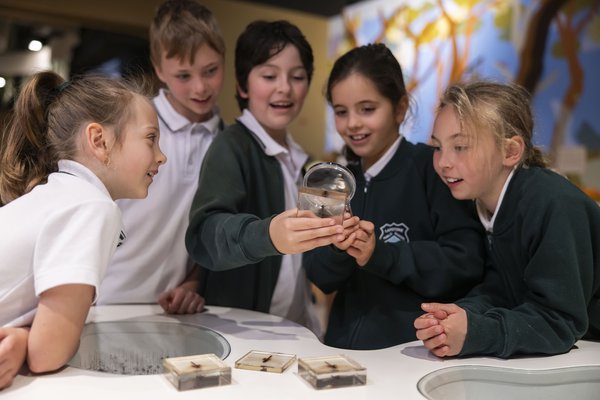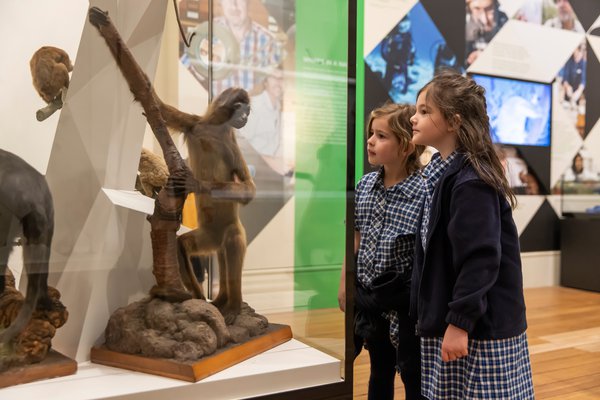Education at the Museum
Enhance your students' learning experiences during their visit to the Museum through our educator-led tours and collection of self-led learning resources.

The Australian Museum is on Gadigal Country. The education team pays their deepest respects to Elders past, present and emerging and thanks the Museum's First Nations staff for sharing their cultural knowledge and experiences so we can better understand the truth of Australia’s history and work together for a shared and sustainable future.
We encourage your students to connect, share and reflect during their experiences at the Australian Museum.
Our exhibitions are rich learning environments and full of weird, mysterious and captivating things which ignite wonder and inspire debate. Upon visiting, you and your students will see a lot of specimens and objects from different places, cultures and times.
But what is the best way to facilitate the ultimate exhibition experience for your students? Here is what we think...
- Identify the exhibitions you want to explore prior to your visit so you can prepare. Do a site visit, find information on our website, and investigate our learning journeys to help you facilitate an engaging education experience including pre-visit warm ups, exhibition suggestions and post-visit discussions. Book a visit for your school group.
- When entering an exhibition offer your students some quiet time so they can absorb what is around them, and prepare for their learning experience. Use our exhibition insights and conversation starters to help facilitate exciting and fun ways for students to engage with the objects and specimens.
- Use our learning approach when facilitating experiences in any exhibition.
- Connect: We want students to connect to what they see, think and feel through closely observing, listening deeply and critically thinking about the objects and specimens on display. We encourage you to provide your students with questions and simple tasks to scaffold their learning. Don't worry, we have designed some exhibition activities to help you! You can find them below.
- Share: We believe students should be given the opportunity to share their ideas within small groups. Sharing information and stories about nature and culture helps us to realise the significance of Country and our role within it, and teaches us to value and respect each other and the environment. We encourage you to facilitate some small group discussion points to scaffold student’s learning. Use our exhibition activities to help you.
- Reflect: We suggest that you share your findings and experiences and reflect as a whole group to help refine key messages and learning outcomes. Reflecting on content within the exhibitions challenges the way we think, and asks us to critically question our understanding of the world. Our hope is for students to be inspired by our exhibitions and take their new knowledge and experiences away with them to drive positive change at a local level.
Educator-led programs
Self-led resources
Conversation starters
Conversation starters aim to ignite creative dialogue between students and their teachers. Through freedom of choice, fun questions and quick activities, students are able to investigate specimens and objects through a new lens.
Exhibition insights
Exhibition insights encourage students to engage critically and think creatively about significant specimens and objects in the galleries chosen by our experts. With thought-provoking questions and prompts, these cards will facilitate your students' exhibition learning.
In focus
Test your research skills and gain an in-depth look at some favourite stories, artworks, objects and specimens at the Museum. Download our resources, solve our mysteries or take some photos and videos to tell a story about your visit.


































